
NGC 4753 is a lenticular galaxy located about 60 million light-years away in the constellation of Virgo. NGC 4753 was discovered by astronomer William Herschel on February 22, 1784. It is notable for having distinct dust lanes that surround its nucleus. It is a member of the NGC 4753 Group of galaxies, which is a member of the Virgo II Groups, a series of galaxies and galaxy clusters strung out from the southern edge of the Virgo Supercluster.

NGC 4498 is a barred spiral galaxy located about 50 million light-years away in the constellation Coma Berenices. NGC 4498 was discovered by astronomer William Herschel on March 21, 1784. NGC 4498 is a member of the Virgo Cluster.
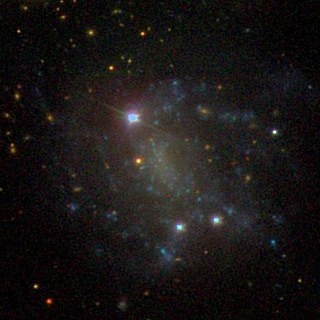
NGC 4523 is a Magellanic spiral galaxy located about 35 to 50 million light-years away in the constellation Coma Berenices. It was discovered by astronomer Heinrich d'Arrest on April 19, 1865. NGC 4523 is a member of the Virgo Cluster. A distance of for NGC 4523 was derived from using yellow supergiants in the galaxy as standard candles.

NGC 4564 is an elliptical galaxy located about 57 million light-years away in the constellation Virgo. NGC 4564 was discovered by astronomer William Herschel on March 15, 1784. The galaxy is also a member of the Virgo Cluster.

NGC 4659 is a lenticular galaxy located about 54 million light-years away in the constellation Coma Berenices. NGC 4659 was discovered by astronomer William Herschel on April 12, 1784 and is a member of the Virgo Cluster.

NGC 4683 is a barred lenticular galaxy located about 170 million light-years away in the constellation Centaurus. It was discovered by astronomer John Herschel on June 8, 1834. NGC 4683 is a member of the Centaurus Cluster.
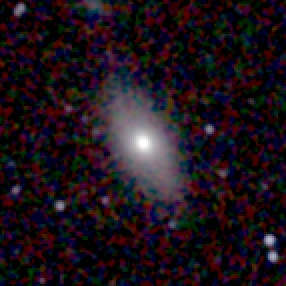
NGC 4706 is a lenticular galaxy located about 157 million light-years away in the constellation Centaurus. It was discovered by astronomer John Herschel on June 5, 1834. NGC 4706 is a member of the Centaurus Cluster.
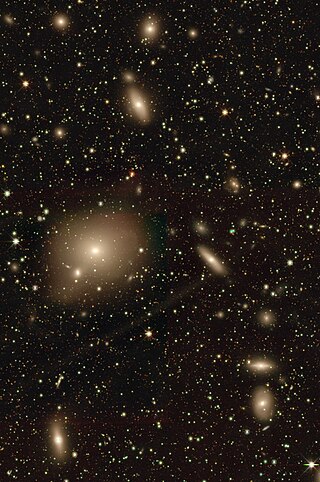
NGC 4709 is an elliptical galaxy located in the constellation Centaurus. It is considered to be a member of the Centaurus Cluster and is the dominant member of a small group of galaxies known as "Cen 45" which is currently merging with the main Centaurus Cluster even though the two subclusters' line of sight redshift velocities differ by about 1500 km/s. NGC 4709 was discovered by astronomer James Dunlop on May 7, 1826.

NGC 4729 is an elliptical galaxy located about 160 million light-years away in the constellation Centaurus. NGC 4729 was discovered by astronomer John Herschel on June 8, 1834 and is a member of the Centaurus Cluster.

NGC 4730 is a lenticular galaxy located about 160 million light-years away in the constellation Centaurus. NGC 4730 was discovered by astronomer John Herschel on June 8, 1834. NGC 4730 is a member of the Centaurus Cluster.
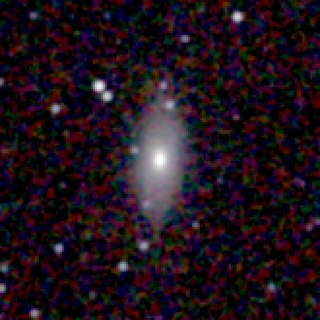
NGC 4743 is a lenticular galaxy located about 145 million light-years away in the constellation Centaurus. NGC 4743 was discovered by astronomer John Herschel on June 8, 1834. It is a member of the Centaurus Cluster.

NGC 4875 is a lenticular galaxy located about 350 million light-years away in the constellation Coma Berenices. NGC 4875 was discovered by astronomer Guillaume Bigourdan on May 16, 1885. The galaxy is a member of the Coma Cluster.

NGC 4876 is an elliptical galaxy located about 325 million light-years away in the constellation Coma Berenices. NGC 4876 was discovered by astronomer Guillaume Bigourdan on May 16, 1885. NGC 4876 is a member of the Coma Cluster.
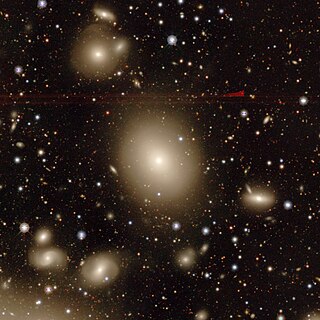
NGC 3308 is a lenticular galaxy with a faint bar located about 174 million light-years away in the constellation Hydra. NGC 3308 was discovered by astronomer John Herschel on March 24, 1835. It is a member of the Hydra Cluster.
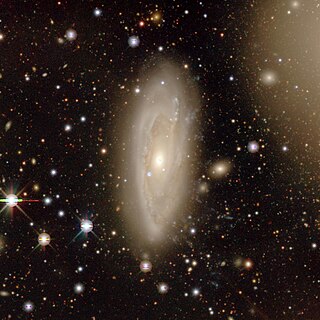
NGC 3312 is a large and highly inclined spiral galaxy located about 194 million light-years away in the constellation Hydra. The galaxy was discovered by astronomer John Herschel on March 26, 1835. It was later rediscovered by astronomer Guillaume Bigourdan on February 26, 1887. NGC 3312 was later listed and equated with IC 629 because the two objects share essentially the same celestial coordinates. NGC 3312 is the largest spiral galaxy in the Hydra Cluster and is also classified as a LINER galaxy.

NGC 3317is a barred lenticular galaxy located about 190 million light-years away in the constellation Hydra. The galaxy was discovered by astronomer John Herschel on March 26, 1835. NGC 3316 is a member of the Hydra Cluster, and appears to have a small companion galaxy known as HCC 15.

NGC 3840 is a spiral galaxy located about 320 million light-years away in the constellation Leo. The galaxy was discovered by astronomer Heinrich d'Arrest on May 8, 1864. NGC 3840 is a member of the Leo Cluster. The galaxy is rich in neutral atomic hydrogen and is not interacting with its environment.

NGC 4895 is a lenticular galaxy located 330 million light-years away in the constellation Coma Berenices. The galaxy was discovered by astronomer Heinrich d'Arrest on May 5, 1864 and is a member of the Coma Cluster.

NGC 709 is a lenticular galaxy located 150 million light-years away in the constellation Andromeda. It was discovered by the Irish engineer and astronomer Bindon Blood Stoney on October 28, 1850 and is a member of the galaxy cluster Abell 262.
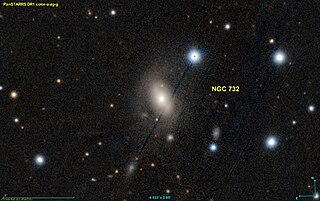
NGC 732 is a lenticular galaxy located 250 million light-years away in the constellation Andromeda. It was discovered by astronomer Édouard Stephan on December 5, 1883 and is a member of Abell 262.




















